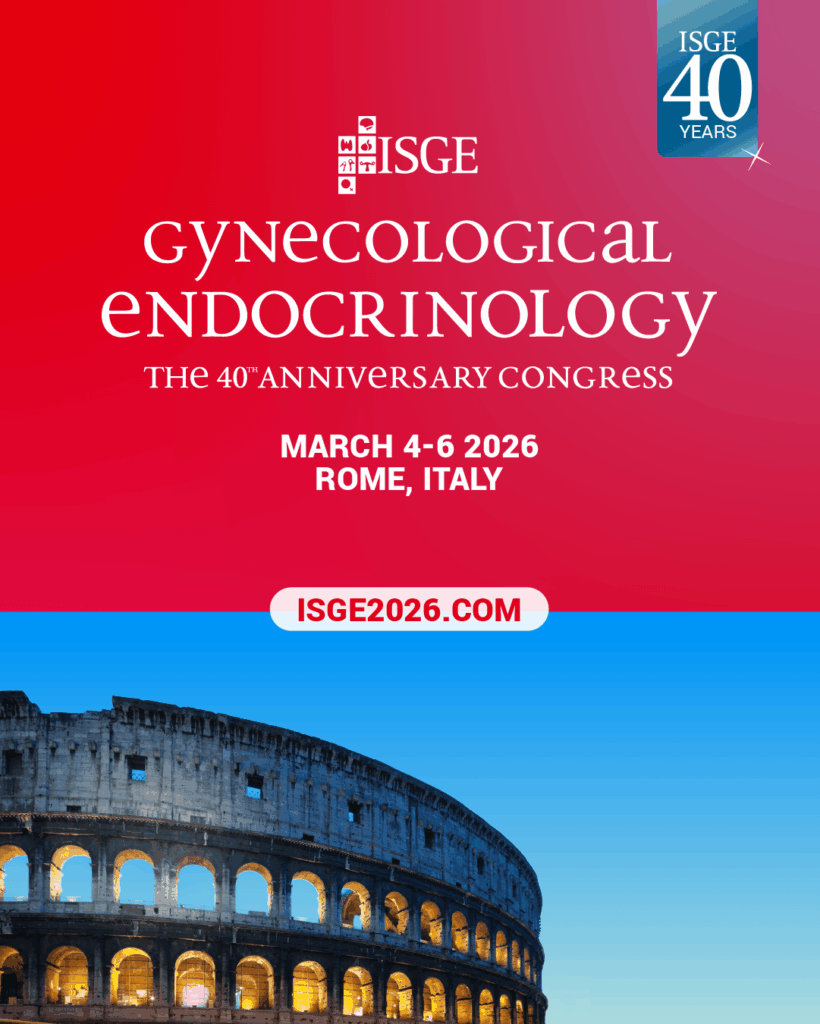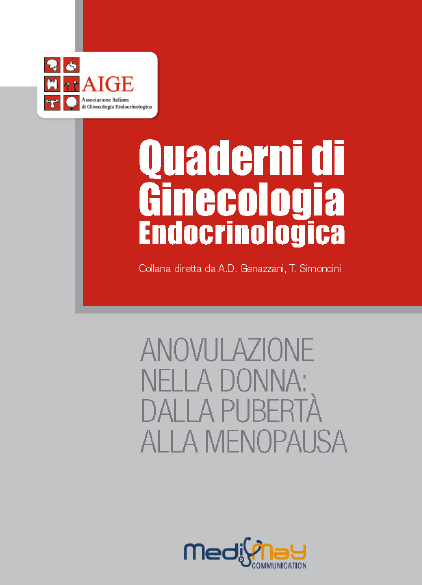-
Peter Humaidan, Jens Quartarolo, Evangelos G. Papanikolaou
Preventing ovarian hyperstimulation syndrome: guidance for the clinician
Fertil Steril 2010;94:389–400
Abstract
Objective TTo reevaluate ovarian hyperstimulation syndrome (OHSS) prevention techniques and provide a classification system for grading OHSS and evidence-based treatment strategies for preventing OHSS.
Design A literature search was conducted in PubMed for articles published in the last 5 years using the keywords “controlled ovarian stimulation” “controlled ovarian hyperstimulation” “ovarian hyperstimulation syndrome” “OHSS” “prevention” “chorionic gonadotropin” “hCG” “GnRH agonist” “GnRH antagonist” “coasting” and “cryopreservation”.
Result(s): There is a shortage of large, prospective RCTs reporting OHSS prediction and prevention strategies. Our review showed that risk factors such as antral follicle count and baseline anti-M€ullerian hormone level may identify women at high OHSS risk. Preventative strategies that appear highly effective at reducing or preventing OHSS include GnRH antagonist protocols and the use of GnRH agonists to trigger final oocyte maturation. Moreover, alternative therapies, such as dopamine receptor agonists (Cabergoline), have also emerged as potential new treatment modalities in the management of this disease.
Conclusion(s): These findings suggest that current treatment guidelines should be updated to incorporate findings from recent literature that show that GnRH antagonist protocols consistently reduce OHSS and that GnRH agonist triggering has considerable promise in preventing OHSS, although further RCTs will be needed to confirm this.
-
Johnny S. Younis, Jimmy Jadaon, Ido Izhaki, Sami Haddad, Orit Radin, Shalom Bar-Ami, Moshe Ben-Ami
A simple multivariate score could predict ovarian reserve, as well as pregnancy rate, in infertile women
Fertil Steril 2010;94:655–61
Abstract
Objective: To find a simple multivariate score that has the potential to predict ovarian reserve, as well as pregnancy rate, in infertile women. Design: A prospective study. Setting: A university-affiliated reproductive medicine unit.
Patient(s): One hundred sixty-eight consecutive women undergoing their first IVF-ET treatment at our unit.
Intervention(s): Basal ovarian reserve studies, endocrine and sonographic, were performed before starting therapy. After completion of treatment, a logistic regression analysis was performed to examine which parameters significantly determined low ovarian reserve. These parameters were incorporated thereafter in a multivariate score to predict ovarian reserve, as well as clinical pregnancy rate.
Main Outcome Measure(s): Low ovarian reserve defined as%3 oocytes on retrieval day and clinical implantation and pregnancy rates.
Result(s): Logistic regression analysis revealed that age, antral follicle count, basal FSH, FSH/LH ratio, mean ovarian volume, infertility duration, number of previous cycle cancellations, and body mass index were all, in decreasing significance, independent factors that determine low ovarian reserve. The multivariate score was shown to have a distinctive prediction of ovarian reserve. A cumulative score of >14 was shown to be more accurate in predicting low ovarian reserve than age, day 3 FSH, or antral follicle count separately. Moreover, a score of >14 was shown to have a sensitivity of 88% and a specificity of 69% in predicting low ovarian reserve. More important, women with a score of >14 had significantly lower clinical implantation and pregnancy rates relative to women with a score of %14, corresponding to 6.7% versus 22.4%, and 11.3% versus 38.6%, respectively.
Conclusion(s): A novel and simplemultivariate score using clinical and basal endocrine and sonographic parameters has a distinctive prediction of low ovarian reserve in infertile women undergoing assisted reproductive technology treatment. Moreover, it has the potential to predict clinical implantation and pregnancy rates in women with low and good ovarian reserve.
-
Alessandro D Genazzani, Federica Ricchieri, Chiara Lanzoni
Use of metformin in the treatment of polycystic ovary syndrome
Women’s Health 2010, 6: 577–593
Abstract
Metformin is quite an old drug, but it is optimal for the control of glycemia in Type 2 diabetes. It was reported, 15 years ago, that insulin resistance was abnormally high in most polycystic ovary syndrome (PCOS) patients. Starting from that moment, increasing numbers of studies were performed to demonstrate the efficacy of metformin in controlling and/or modulating several aspects of PCOS, which is the most common cause of menstrual irregularity, inesthetisms and infertility. Metformin induces higher glucose uptake, thus inducing a lower synthesis/secretion of insulin. Such an effect permits the possible restoration of the normal biological functions that are severely affected by the compensatory hyperinsulinemia reactive to the increased peripheral insulin resistance. These are the basis of the many positive effects of this drug, such as the restoration of menstrual cyclicity, ovulatory cycles and fertility, because abnormal insulin levels affect the hypothalamus–pituitary–ovarian function, as well as the use of glucose in peripheral tissues. Metformin improves the impairments typically observed in hyperinsulinemic PCOS patients, reducing the possible evolution towards metabolic syndrome and Type 2 diabetes; and when pregnancy occurs, it consistently reduces the risk of gestational diabetes, eclampsia and hypertension. PCOS seems to be the perfect physiopathological condition that might have higher benefits from metformin administration, obviously after Type 2 diabetes. This review focuses on the many aspects of PCOS and on the possible issues of this disease for which metformin might be a putative optimal treatment..
-
Camil Castelo-Branco, Maria Jesus Cancelo
Comprehensive clinical management of hirsutism
Gynecological Endocrinology 2010; 26: 484–493
Abstract
Hirsutism is an excessive body and facial hair growth in women in locations where is normally minimal or absent following a hair-male pattern. For this reason is not uncommon that hirsutism raises psychological, cosmetic and social concerns. There are many treatment modalities that can be summarised into two broad groups: pharmacologic and nonpharmacologic treatment. Until now, medical treatment has been designed to interfere with the synthesis of androgen at the ovarian or adrenal level, or inhibit the effect of androgen at the receptor level, although recent progresses test other options such as insulin modulators or ornithine decarboxylase inhibitors. Mechanical treatment includes laser hair removal, electrolysis, depilatory creams, plucking and waxing. This article presents a general overview of hirsutism treatment options.
-
FERNAND LABRIE, DAVID ARCHER, CE´ LINE BOUCHARD, MICHEL FORTIER, LEONELLO CUSAN, JOSE´ -LUIS GOMEZ, GINETTE GIRARD, MIRA BARON, NORMAND AYOTTE, MICHE` LE MOREAU, ROBERT DUBE´, ISABELLE COˆ TE´, CLAUDE LABRIE, LYNE LAVOIE, LOUISE BERGER, CE´ LINE MARTEL, JOHN BALSER
High internal consistency and efficacy of intravaginal DHEA for vaginal atrophy
Gynecological Endocrinology 2010; 26: 524–532
Abstract
Following the compelling data obtained in a pivotal phase III clinical trial performed in 218 postmenopausal women suffering from vaginal atrophy who received daily intravaginal 0.25, 0.5 or 1.0% DHEA (dehydroepiandrosterone) ovules for 12 weeks, we have performed analysis of the four co-primary objectives at each site of that multicentre U.S. and Canadian trial. Comparison was made of the change in percentage of parabasal and superficial cells, vaginal pH and severity of the most bothersome symptom. The site-by-site (seven sites) analysis has shown that 10–13 women per group are generally sufficient to obtain a significant or highly statistically significant decrease in vaginal pH and percentage of parabasal cells and increased percentage of superficial cells at p values ranging from 0.02 to50.0001. For vaginal pain as the most bothersome symptom, a statistically significant difference from baseline was found at six out of seven sites. The exceptionally high consistency between all sites in this phase III study and high potency of the compound permit to obtain a clinically and statistically significant to highly significant effect of treatment on all parameters of vaginal atrophy with the 0.5% DHEA daily intravaginal dose which does not significantly affect the serum levels of oestrogens, thus avoiding systemic risks.
-
Leila Yassa, Ellen Marqusee, Rachael Fawcett, and Erik K. Alexander
Thyroid Hormone Early Adjustment in Pregnancy (The THERAPY) Trial
J Clin Endocrinol Metab 95: 3234–3241, 2010
Abstract
Background: Thyroid hormone requirement increases 20–40% during gestation. Women with treated hypothyroidism must increase their L-T4 in pregnancy to prevent maternal hypothyroidism, although how this should be accomplished is unclear.
Methods: We prospectively enrolled 60 women with treated hypothyroidism seeking pregnancy. Once pregnant, women were randomized to increase L-T4 by either two tablets/wk (group A) or three tablets/wk (group B). Thyroid function was tested biweekly through midpregnancy and at 30 wk gestation. Levothyroxine was adjusted to maintain goal TSH concentrations. The primary objective was to assess efficacy in preventing maternal hypothyroidism and the safety of this intervention.
Results: Forty-eight women completed the protocol. Increasing the L-T4 dose once pregnant (regardless of study arm) preventedTSHelevation over 5.0 mIU/liter throughout the first trimesterand replicated physiological changes of pregnancy. The early L-T4 increase caused TSH suppression below 0.5 mIU/liter in eight of 25 women in group A compared with 15 of 23 women in group B (P < 0.01). This risk was significantly increased in athyreotic patients [odds ratio (OR) = 3.3; 95% confidence interval (CI) = 1.1–11.1], those with prepregnancy TSH less than 1.5 mIU/liter (OR = 4.6; 1.3–16.2), and those receiving prepregnancy L-T4 doses of 100 µg/d or more (OR = 7.2; 1.7–30.6). However, if a trimester-specific TSH lower reference range of 0.1 mIU/liter was used, only two patients (8%) in group A required dose reduction. TSH testing every 4 wk identifies 92% of abnormal values.
Conclusions: A two-tablet increase in L-T4 initiated at confirmation of pregnancy significantly reduces the risk of maternal hypothyroidism during the first trimester and mimics normal physiology. Monitoring TSH every 4wkthrough midgestation is recommended.
-
N.P. Johnson, A.W. Stewart, J. Falkiner, C.M. Farquhar, S. Milsom, V.P. Singh, Q.L. Okonkwo, K.L.
Buckingham and on behalf of REACT-NZ (REproduction And Collaborative Trials in New Zealand), a multi-centre fertility trials group PCOSMIC: a multi-centre randomized trial in women with PolyCystic Ovary Syndrome evaluating Metformin for Infertility with Clomiphene
Human Reproduction 2010 25: 1675-1683
Abstract
BACKGROUND: Ovulation induction treatment with metformin, either alone or in combination with clomiphene citrate (CC), remains controversial even though previous randomized trials have examined this.
METHODS: A double blinded multi-centre randomized trial was undertaken including 171 women with anovulatory or oligo-ovulatory polycystic ovary syndrome. Women with high body mass index (BMI) > 32 kg/m2 received placebo (‘standard care’) or metformin; women with BMI 32 kg/m2 received CC (‘standard care’), metformin or both. Treatment continued for 6 months or until pregnancy was confirmed. Primary outcomes were clinical pregnancy and live birth.
RESULTS: For women with BMI > 32 kg/m2, clinical pregnancy and live birth rates were 22% (7/32) and 16% (5/32) with metformin, 15% (5/33) and 6% (2/33) with placebo. For women with BMI 32 kg/m2, clinical pregnancy and live birth rates were 40% (14/35) and 29% (10/35) with metformin, 39% (14/36) and 36% (13/36) with CC, 54% (19/35) and 43% (15/35) with combination metformin plus CC.
CONCLUSIONS: There is no evidence that adding metformin to ‘standard care’ is beneficial. Pregnancy and live birth rates are low in women with BMI > 32 kg/m2 whatever treatment is used, with no evidence of benefit of metformin over placebo. For women with BMI 32 kg/m2 there is no evidence of significant differences in outcomes whether treated with metformin, CC or both.
-
Fahimeh Ramezani Tehrani, Masoud Solaymani-Dodaran, Mehdi Hedayati, Fereidoun Azizi
Is polycystic ovary syndrome an exception for reproductive aging?
Human Reproduction 2010 25(7):1775-1781
Abstract
BACKGROUND: Anti-Mullerian hormone (AMH) is increased in women with polycystic ovary syndrome (PCOS), suggesting a delay in ovarian aging. We examined AMH levels in PCOS and normo-ovulatory women in a population-based cohort over a period of 10 years and used this information to estimate their menopausal age.
METHODS: Of a subset of 1002 non-menopausal women randomly selected from the Tehran Lipid and Glucose Study, 85 cases of PCOS were diagnosed. We frequency-matched our control subjects with PCOS cases based on age and BMI. AMH levels were assessed at the time of recruitment (T1) and twice after that (T2 and T3). AMH levels were then plotted against age of the individual at the time of the measurement and the most appropriate model was selected. Menopause was calculated based on AMH levels below 0.2 ng/ml.
RESULTS: AMH levels were significantly higher in PCOS cases compared with controls at the beginning of the study (5.58 ± 3.64 versus 4.35 ± 2.90 ng/ml, P = 0.03), but the difference diminished considerably in subsequent assessments. The rate of AMH decline in PCOS cases decreased in the second compared with the first interval; however, no apparent change in the rate of decline was observed in controls. Estimated ages at menopause were 51 [95% confidence interval (CI), 34–81] and 49 (95% CI, 38–63) years in PCOS cases and controls, respectively.
CONCLUSIONS: The reproductive lifespan of PCOS women extends on average 2 years beyond that of normo-ovulatory women.






